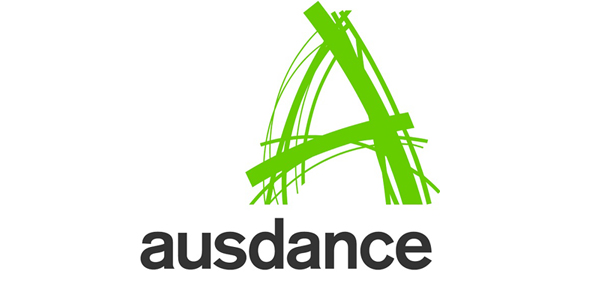By Paul Ransom.
Australia’s peak dance body might not always get your next project funded but Ausdance is busy dancing for your supper; and according to national director Julie Dyson, it’s all about sustainability.
What if there was a service organisation dedicated to dance? Suppose they lobbied government, inaugurated national dance awards and drove research into safe dance practice. What if they were working to ensure a viable, sustainable industry? Suppose they were the champions of dance.
Well, that would be Ausdance, wouldn’t it?
Yet for all that, and a nationwide membership base of two thousand, one question looms large. What can you do for me?
It’s a question that Ausdance’s national director Julie Dyson has heard many times before. “There are serious questions about service organisations; are we competing with artists for the money and all of that. I completely get that,” Dyson states. “But from our point of view we provide infrastructure without which we’d all be much poorer. Who’s going to go and lobby the minister, negotiate the partnerships or publish the books if we don’t?”
As Australia’s peak dance organisation, Ausdance is effectively the industry’s lobbyist and, as Dyson explains, their brief is to sell the sector rather than individuals. “It’s about ongoing advocacy for dance,” she says. “Most people are interested in their own particular aspect of our work. So if you’re an artist or an educator, you want to know what we’re doing for you or your particular area, but what we have to try and do is to marry a lot of those interests so that the whole ecology of dance is represented.”
However, the local dance community (and indeed the entire arts sector in this country) is necessarily fixated on the question of funding. Work that doesn’t involve the signing of cheques or wins that happen in the background often get overlooked. “Our brush is very broad and sometimes that leads to people not quite understanding what we do focus on,” admits the Ausdance chief.
As an example, she cites the inclusion of dance in the national curriculum and its obvious flow-on benefits for dance educators, not to mention the building of a broader based dance culture and, ultimately, more bums on seats. “And it’s largely the work of Ausdance that got it there,” Julie Dyson argues.
To the cash strapped company or table waiting artist, talk of the longer term health of the sector can seem a little removed. From her office in Canberra, Dyson is keen to suggest that playing the game in the rarefied air of the national capital is critical to people’s real world practice. “Understanding how Canberra works is really a big part of our job. We try and stay near to ground and knowing what the political climate is.”
A beat later, she reiterates, “I would never claim that we could help anyone get more money for this project or that. We’re more about getting money for the whole sector.”
To this end, she believes that people in the dance community need not merely to work together but to be more active. “Sometimes you’ll get a company saying ‘where are you up to?’ but actually, ‘where are you up to?’ We’ve all got to be in this.”
For Ausdance projects like the national dance collection (an ever growing archive of film, flyers and other memorabilia), the soon to be published Shaping The Landscape (with thirty five artist contributors) and even the much beloved national dance awards are all part of pooling knowledge, creating networks and celebrating the creative strength of the community.
“Between us we’ve all got a lot of intelligence and I think what Ausdance does is facilitate the sharing of that information,” Julie Dyson expands. With cultural policies and their attendant funding mixes almost always coming for one review or another, the work is ongoing. “We’re all about the sector being connected, viable, sustainable, properly funded and having a profile.”
The challenge for Ausdance going forward is perhaps one of perception, as its national director duly acknowledges. “We need to raise our profile and talk a little bit more about what we’ve achieved. We’re a bit under the radar. The fact that people are still saying, ‘well, what do they do?’ is an indication of that.”
Meanwhile, in their Canberra HQ and their various state offices, Ausdance staff focus on the long term, doing the often un-sexy work of writing submission papers, organising forums, and updating their website. However, visions of highly paid bureaucrats swanning about in airport lounges are, according to Julie Dyson, a tad unfair. “Well, there are only four people in our office, so it’s hardly a bureaucracy,” she jokes.
As for a call-to-action, well, that one’s obvious. “It’s important for the dance community to be proactive,” Dyson declares. “If you have a problem with Ausdance, pick up the phone.”
After all, it takes two to tango.
Support the organisation that supports the Australian dance industry – Ausdance.
For more information about Ausdance and membership visit www.ausdance.org.au

















